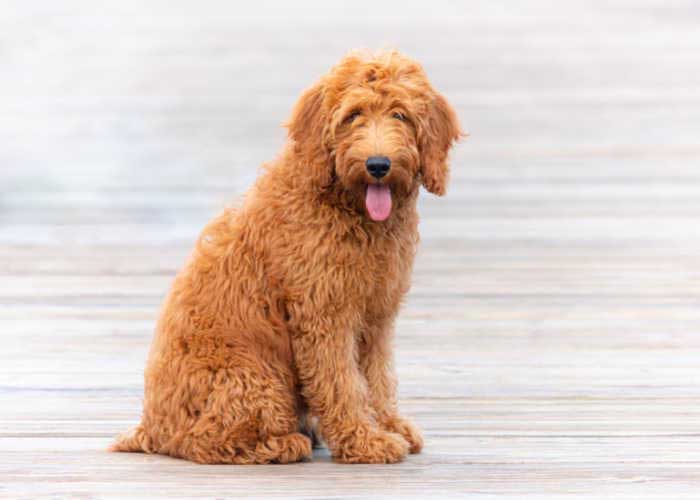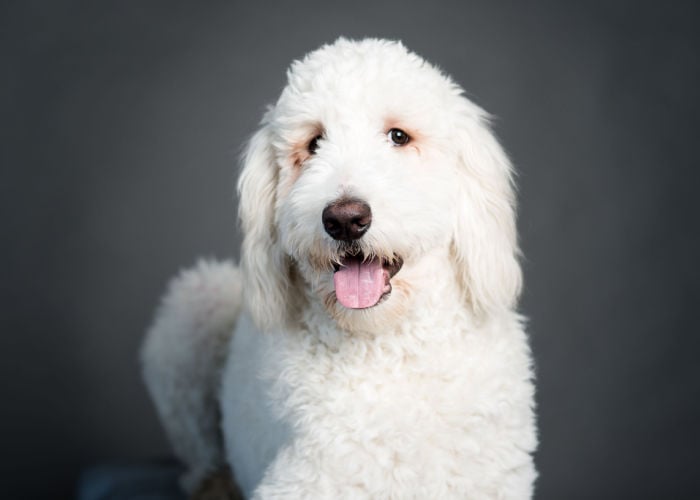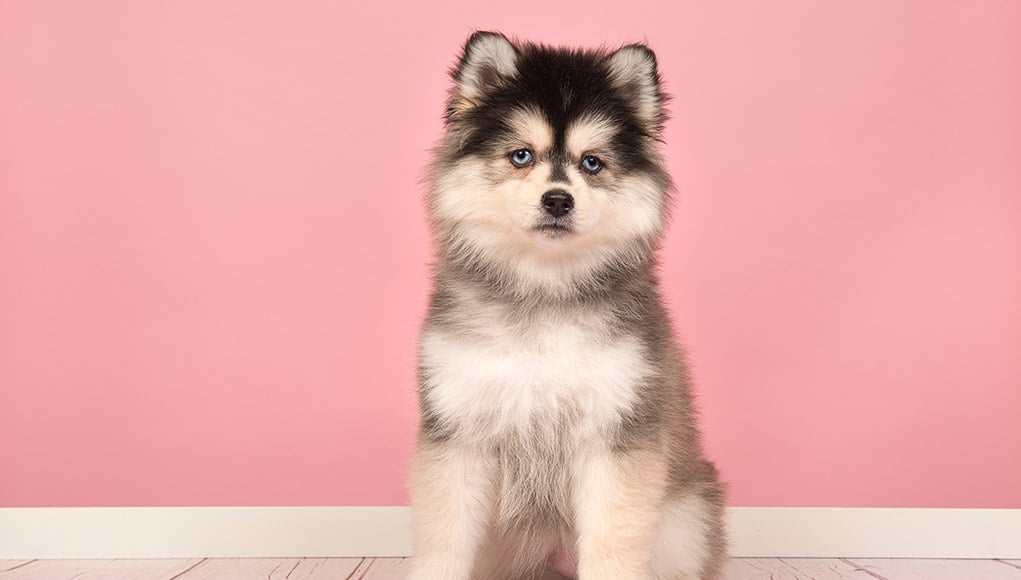
Table of Contents
Let’s face it: being a pet owner with heightened skin sensitivity and allergies is not the most suitable combination.
You may want to rush toward a cute yet mighty American Eskimo Dog or an adorable puppy-eyed Beagle but your allergies will hold you back.
Remember the last time you were around your friend's dog? You were sneezing, coughing, and all red-eyed.
What if there was a way to have the best of both worlds?
A secret way to reduce or significantly minimize those annoying allergic reactions.
Well, the solution exists in the form of hypoallergenic dogs.
But what are hypoallergenic dogs? Are they just a myth or can a dog truly be 100 percent hypoallergenic?
These are some of the questions that we will explore today. So, strap in, and let’s start our journey!
Mixed-Breed Hypoallergenic Dogs. But First, What Are Hypoallergenic Dogs?
Contrary to popular belief, most people are not allergic to dogs (unless diagnosed otherwise) but to the flakes on their fur and skin. These flakes are known as dander.
It is worth noting that dogs with fur always have more dander and shedding than dogs with hair.
Hypoallergenic dogs have hair instead of fur which makes them a great choice for people with allergies.
So, if you have allergies and are looking for a dog, opting for a mixed-breed hypoallergenic dog is a no-brainer.
It’s a common misconception that hypoallergenic breeds do not shed, but this is not the case. They simply shed a lot less than normal breeds.
Dogs are man’s best friend, after all. They give us company, enhance our overall mood, and reduce anxiety.
So, if there is a way to own a dog without your allergies flaring up, why not go for it?
Why Choosing the Right Dog Breed Is Important
Now that we have established the need for hypoallergenic dogs, let’s discuss which breed is right for you.
Choosing the breed that best fits your lifestyle, affordability, and space in your home is essential for you and your future pet.
Remember that no dog breed is inherently good or bad. It’s more about your preferences and finding one that best aligns with them.
For myself, I chose a Labrador due to its outgoing and high-spirited personality. Say hello to Leia!

Getting a dog that requires a lot of time to train might not be the most appropriate choice for an individual with a busy schedule.
Or choosing one with a high insurance premium might not be the wisest financial decision for someone who wants to save money.
When inquired about reasons for abandoning their pets in Spain in 2020, the highest number of respondents said it was due to financial reasons.
Top 8 Mixed-Breed Hypoallergenic Dogs
Purebreds can also be hypoallergenic, such as the Afghan Hound and Poodle.
But since mixed breeds get the best traits of their parents, they often inherit a non-shedding coat.
So, now that we have discussed what hypoallergenic dogs are and what factors to consider when getting a pet, it’s time we move on to the top 8 mixed-breed hypoallergenic dogs:

1. Goldendoodle
This adorable breed is a mix between a Poodle and a Golden Retriever.
They’re one of the cutest and cuddliest mixed breeds. The eternal puppy dog glint in their eyes makes them irresistible to everyone around them.
Not only that, but they’re also very loyal, extremely energetic, and easy to train.
This makes them a popular choice among young people who value these traits.

2. Mastipoo
This intimidating mixed-breed dog is a combination of the aloof Mastiff and smart Poodle.
No wonder it has also inherited the strong and brainy aura of its parents.
These laid-back dogs have a sweet and friendly temperament, making them extremely loveable.
Behind their nonchalant exterior is a dog who is loyal almost to a fault.
So, if you’re looking for a pet and a watchdog, a Mastipoo is a wise choice.

3. Morkie
This cute small-sized breed is a cross between a Maltese and a Yorkshire Terrier.
This adorable pet is a popular choice in big cities due to its cuddly size. They also demand loads of attention.
So, if you’re looking to shower your love, this breed is the one for you.
Once they get comfortable, they will reciprocate affection with intense and passionate loyalty.
This also makes them great watchdogs if that is a part of your criteria.

4. Cockapoo
If you’re looking for an affectionate and easy-going dog, this mix between Poodle and Cocker Spaniel will be perfect for you.
They’re friendly dogs with balanced temperaments, which means they get along with almost everyone, including strangers.
They will also be a wise choice if you have children at home since they rarely get angry.
They have an impressive lifespan of 12 to 15 years, so your children won’t have to mourn the loss of a pet any time soon.

5. Pomsky
This adorable fun-sized dog is a mix between a Siberian Husky and a Pomeranian parent.
They’re small at around 10 to 15 inches tall, which makes them a perfect fit for people with limited space.
They also have a considerable lifespan of 12 to 15 years.
It is also worth mentioning that although they are loving, they also demand a lot of time and attention.
This makes them unsuitable for people with children since they get envious and insist on your undivided attention.
6. Chiweenie
The Chiweenie is definitely a contender for the cutest mixed breed award.
This adorable breed is a mix between the Chihuahua and Dachshund breeds.
Due to its lovable size, this breed is perfect for small apartments and will truly brighten up your life.
Their superpower is the classic puppy dog eyes which will ensure that they always get what they want.
The Chiweenie has truly inherited mom and dad’s best traits.
7. Siberian Retriever
The Labrador and Siberian Husky breeds are large but we believe their mix the Siberian Retriever is the perfect medium-sized breed.
The wit and inquisitive nature of a Husky combined with the kind and gentle of a Labrador is truly something to behold.
They require quite a lot of exercise but are never aggressive. You should definitely consider this breed if you have children.
8. Corgidor
The Corgidor is a medium-sized breed with short legs. A perfect mix of the Welsh Corgi and Labrador Retriever.
They are great companions and are unbelievably cute. Since both parents are of large breeds, a Corgidor can grow larger than expected up to 22 inches.
They are very energetic and will have you running around in no time.
You should not get a Corgidor if you have a busy schedule as they require a lot of exercise.
You can also watch the following YouTube video to learn how to stop dogs from shedding:
Factors to Consider When Getting a Dog
Now that we know why choosing the right dog breed is essential for you and the dog you are adopting alike, let’s discuss the factors you need to consider when making your final decision:
1. Age and Activity Level
Much like how adolescents have higher levels of energy than adults, puppies and dogs follow a similar developmental pattern.
You’ll need to spend more time training the puppy. This may include potty training, crate training, socialization, and not biting your hand or other belongings.
Moreover, a puppy or adolescent dog may also require frequent long walks to release that lively spirit of youth.
If your work schedule cannot allow for that, going for a relatively older or senior dog might be a more appropriate choice.
2. Size
The size of your home or apartment is another aspect you should consider.
If you’re thinking about getting a large dog, your home should be spacious enough to accommodate your dog walking around with ease.
Certain breeds are naturally very energetic and require enough room for running or playing to release this energy.
If your home has a high-fenced backyard, this will allow the dog to play by itself and not feel coped up.
If that is not the case for you, opting for a smaller and relatively less active dog may be a better choice.
3. Personality
Your dog will be your best friend for life.
Much like how you naturally do not get along with every person you interact with, you might also have a frustrating relationship with dogs of certain personality types.
How do you determine what sort of dog you want?
Well, you can start analyzing your traits to find what you are looking for.
Do you go out a lot for long runs, or do you prefer solitary hours at your home? A dog with high energy is more suited to an individual with high energy.
Mixed Breeds vs Purebreds: Expenses
The craze centered around purebred dogs has died down in the last couple of years, but some traces remain.
If you’re conflicted between the two options and want to know which will suit you more in terms of cost, we have you covered.
It is already well known that purebreds are more expensive than mixed-breed dogs.
This is because you’re not buying just the dog but also the history of its lineage.
While purebreds generally range from $300 to $10,000, mixed-breed dogs are more affordable at $150 to $3600, depending on the breed chosen.
However, keep in mind that this initial cost is not the only amount you will spend on your pet.
There are other factors to consider as well. These include:
- Dog food
- Insurance costs
- Grooming costs
- Training
- Healthcare (vaccinations and medications)
It is also worth noting that certain dogs may have increased susceptibility to some diseases, due to their genetics.
For example, large dogs may suffer from bone and joint conditions, whereas those with small noses will have difficulty breathing later on in their lives.
You will have to get the right insurance plan, which will cost $30 to $70+ per month, depending on the breed.
Generally, purebreds are only offered premium packages that cost more.
According to a recent report, English and French bulldogs (both purebreds) were the most expensive to insure in the United Kingdom in 2022.
This means an approximate cost of $800+ annually for purebreds and $350+ for mixed-breed dogs.
Not only that, but purebreds have issues stemming from inbreeding. They are more likely to inherit genetic defects passed through the generation.
This will increase the overall health bill for your purebred dog. This matter is not necessarily a concern in mixed breeds, due to their diverse genetic pool.
Generally, we only recommend purebreds if you want to fulfill a specific purpose (such as hunting or any other specialized training).
Otherwise, mixed breeds are just as friendly and affectionate as purebreds. Plus, they generally live longer.
The consensus is clear: purebreds cost way more than mixed breeds. But their size and overall health concerns are more predictable than mixed breeds.
Best Mixed Breed Hypoallergenic Dogs: Final Words
So, now that we have reached the end, it’s time to debunk the final myth.
Is there any such thing as a hypoallergenic dog? Will the dog shed no hair at all?
Well, yes and no. No dog breed will shed absolutely zero hair.
However, mixed-breed hypoallergenic dogs have significantly reduced shedding and dander.
This makes them the safest and most effective alternative for people with allergies.
You will be able to pet, cuddle, and blissfully play with your dog as much as you please.
No more worrying about a runny nose, red eyes, constant sneezing, and coughing anymore!
If you have any questions, feel free to ask us in the comments below.
Just remember to get a dog that fits your lifestyle and personality. This will lead to fun and good times for both of you.












